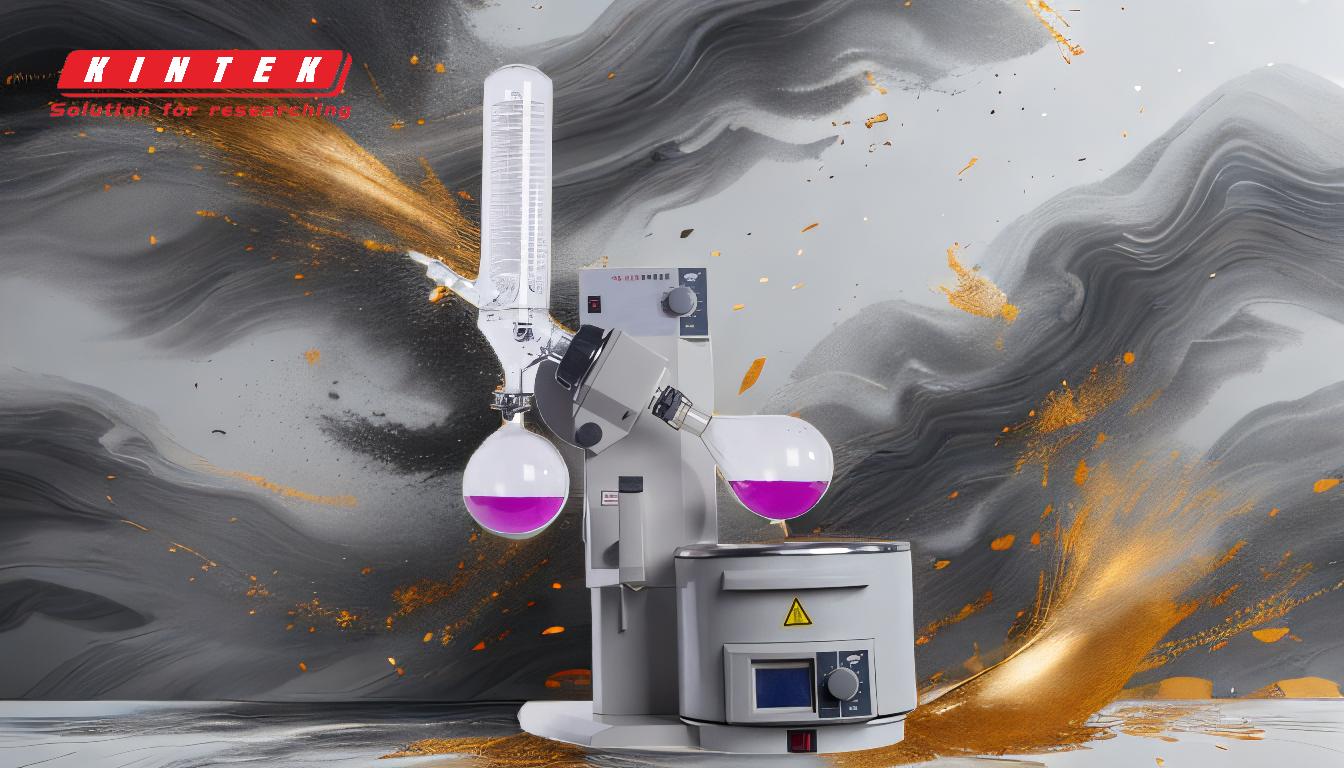Rotary evaporation is a widely used technique in laboratories for solvent removal and concentration of samples. However, it has several disadvantages that can impact its efficiency, safety, and suitability for certain applications. These include issues like bumping, slow evaporation rates, inefficiency with small samples, and challenges with high boiling point solvents. Additionally, the process can lead to sample loss, foaming, and even changes in the sensory properties of the final product. Understanding these drawbacks is crucial for optimizing the use of rotary evaporators and mitigating potential problems.
Key Points Explained:

-
Bumping and Sample Loss:
- What is Bumping?: Bumping refers to the sudden and violent boiling of a liquid under vacuum conditions, which can cause the sample to splatter or eject from the evaporator flask.
- Why It’s a Problem: This phenomenon is particularly common with mixtures containing ethanol and water, leading to significant sample loss and potential contamination of the apparatus.
-
Mitigation Strategies:
- Introduce a homogeneous phase to stabilize the boiling process.
- Adjust the vacuum strength or water bath temperature to control the boiling rate.
- Use additives like boiling chips to promote even boiling.
- Employ specialized traps and condenser arrays to capture ejected material.
-
Slow Evaporation Rates:
- Issue: Rotary evaporation can be time-consuming, especially when dealing with high boiling point solvents or large volumes of liquid.
- Impact: Slow evaporation can lead to inefficiency in the lab, particularly when processing multiple samples.
-
Mitigation:
- Optimize vacuum strength and water bath temperature to balance evaporation rate and sample integrity.
- Use a chiller with adequate cooling capacity to handle high boiling point solvents effectively.
-
Inefficiency with Small Samples:
- Challenge: Rotary evaporators are not well-suited for small sample volumes, as they can lead to wasted effort, lost time, and increased risk of cross-contamination.
-
Solution:
- Use micro-rotary evaporators or other specialized equipment designed for small-scale applications.
- Ensure proper cleaning and maintenance of the equipment to minimize cross-contamination.
-
Foaming:
- What is Foaming?: Foaming occurs when the surface tension of the sample decreases, leading to the formation of bubbles that can overflow or cause bumping.
- Impact: Foaming can complicate the evaporation process and lead to sample loss or contamination.
-
Mitigation:
- Adjust the vacuum or temperature to reduce foaming.
- Use anti-foaming agents if compatible with the sample.
-
Sensory Property Changes:
- Issue: The evaporation process can alter the sensory properties of the final product, such as taste and aroma. For example, certain aromatics may become more pronounced in the precipitate, leading to an unbalanced or unpleasant taste.
- Impact: This can be particularly problematic in industries like food and beverage, where sensory properties are critical.
-
Mitigation:
- Carefully monitor the evaporation process to avoid over-concentration of certain compounds.
- Adjust the process parameters to preserve the desired sensory profile.
-
Thermal Decomposition:
- Challenge: Some samples, such as cannabis extracts, are sensitive to heat and can undergo thermal decomposition if the water bath temperature is too high.
- Impact: This can degrade the quality of the sample and lead to loss of valuable compounds.
-
Mitigation:
- Use a chiller to maintain lower water bath temperatures.
- Monitor the temperature closely to prevent overheating.
-
Condenser Overload:
- Issue: Increasing the evaporation rate by lowering the vacuum or raising the water bath temperature can overload the condenser, allowing solvent vapors to pass through into the vacuum pump.
- Impact: This can lead to contamination of the vacuum pump and potential safety hazards.
-
Mitigation:
- Ensure the condenser has adequate cooling capacity.
- Adjust the vacuum and temperature settings to avoid overloading the condenser.
-
Single-Sample Nature:
- Limitation: Rotary evaporators typically process one sample at a time, which can be inefficient for labs handling multiple samples.
-
Solution:
- Consider using parallel evaporation systems or automated rotary evaporators to increase throughput.
By understanding these disadvantages and implementing appropriate mitigation strategies, users can optimize the performance of rotary evaporators and minimize potential issues. This ensures more efficient, safe, and reliable operation in various laboratory settings.
Summary Table:
| Challenge | Impact | Mitigation Strategies |
|---|---|---|
| Bumping and Sample Loss | Sample splatter, contamination, and loss | Use boiling chips, adjust vacuum/temperature, employ traps/condenser arrays |
| Slow Evaporation Rates | Time-consuming, inefficient for high boiling point solvents | Optimize vacuum/temperature, use a chiller |
| Inefficiency with Small Samples | Wasted effort, cross-contamination risk | Use micro-rotary evaporators, ensure proper cleaning |
| Foaming | Complicates evaporation, sample loss/contamination | Adjust vacuum/temperature, use anti-foaming agents |
| Sensory Property Changes | Altered taste/aroma in final product | Monitor evaporation, adjust process parameters |
| Thermal Decomposition | Degradation of heat-sensitive samples | Use a chiller, monitor temperature |
| Condenser Overload | Contamination of vacuum pump, safety hazards | Ensure adequate condenser cooling, adjust vacuum/temperature |
| Single-Sample Nature | Inefficient for labs handling multiple samples | Use parallel evaporation systems or automated rotary evaporators |
Optimize your rotary evaporation process today—contact our experts for tailored solutions!










